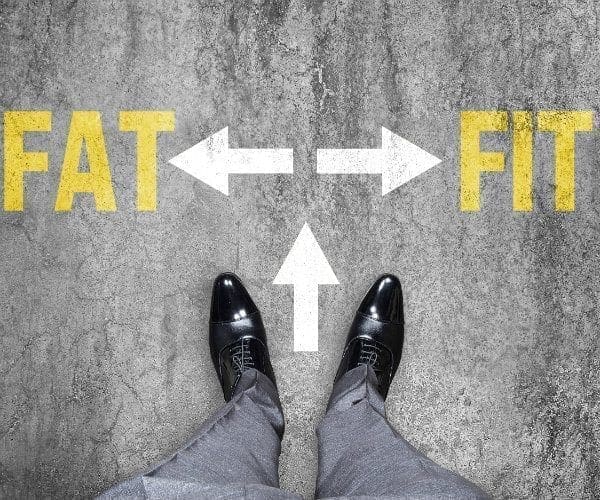Diets
Back Clinic Diets. The sum of food consumed by any living organism. The word diet is the use of specific intake of nutrition for health or weight management. Food provides people with the necessary energy and nutrients to be healthy. By eating various healthy foods, including good quality vegetables, fruits, whole-grain products, and lean meats, the body can replenish itself with the essential proteins, carbohydrates, fats, vitamins, and minerals to function effectively.
Having a healthy diet is one of the best things to prevent and control various health problems, i.e., types of cancers, heart disease, high blood pressure, and type 2 diabetes. Dr. Alex Jimenez offers nutritional examples and describes the importance of balanced nutrition throughout this series of articles. In addition, Dr. Jimenez emphasizes how a proper diet combined with physical activity can help individuals reach and maintain a healthy weight, reduce their risk of developing chronic diseases like heart disease, and ultimately promote overall health and wellness.

by Dr Alex Jimenez DC, APRN, FNP-BC, CFMP, IFMCP | Diets
El Paso, TX. Chiropractor Dr. Alex Jimenez takes a look at desserts and sweets.
Would you feel guilty eating sweets? You must not. There’s nothing wrong with eating an occasional sweet. It is much wiser to plan a dessert that is sweet again and now, rather than deprive yourself for weeks only to eat half your body weight in sweets later.
Balance Counts
Regrettably, way too many Americans eat way too much sugar. Our per capita consumption of sugar is 120 pounds per year! This works out to 600 extra calories a day which are devoid of any nutritional value. In view of the fact, it is obvious why Americans have a problem with obesity while falling short with other crucial nutrients like calcium, iron and folic acid.
A short note has to be stated about carbohydrates along with the bodies’ capacity to burn them. Which food would you believe causes obesity? As sugar is a concentrated supply of carbohydrates, extra calories can be carried by it. Excessive calories are converted into fat!
It can cause other health problems although sugar in the diet does not have the killer status of salt and fats. Tooth decay can function as the effect of sweets taken in between meals. Honey, which many believe is fitter than table sugar, truly has a paste which adheres cavity causing bacteria to teeth.

Sugar:�An Acquired Taste
Luckily our taste for sweets is acquired substantially like our taste for salt. This means by changing the numbers in our diet we can alter our flavor acquity for sugar.
Gradually replace less sweet foods, like tea biscuits and fruit tarts, for icing-load cakes and cookies. Make some of your favorite recipes with a third less sugar. Without altering the final product the sugar generally in most recipes can be reduced by 50 to 75 percent. You may use half the amount of concentrate to produce the same amount of sweetness as fruit juice concentrate is as sweet as sugar. Fruit juice concentrate additionally helps supply moisture to baked goods which are reduced in fat.
Assess the “tips” section for additional thoughts on checking your sweet tooth. Don’t forget, you want nutritional value for your calories. More healthy options go a long way in making you fit thin and cut.
Strategies For Cutting Back On Sugar
- If sweets are your downfall, try saving them. Plan cookie or a candy bar on the weekends, say, ahead of time. It’s far better to incorporate them to them than binge when feeling deprived.
- Bake your own sweets. Or try substituting applesauce for sugar in muffin and sweet bread recipes.
- Use dried fruits in cookies as additional sweeteners. As stand alone snacks beware as they�may stick to teeth and are rich in calories.
- Use powered sugar as a substitute for icings on chocolate cakes. Get a doilie and position on top of cake. Sprinkle powdered sugar on top and remove doilie… Wallah! Poetry with no additional fat!
- Use “conserves” instead of “preserves”. The former do not have added sugar.
- Use sliced fresh fruit for pancakes or french toast. Sprinkle with powdered sugar. This helps bypass the maple syrup.
- Buy basic non fat yogurt and add your own personal fresh fruit. Flavored yogurts can include up to seven teaspoons of sugar that is added. This works nicely for sweetening chilly goods, but breaks down in cooking.
- Search for more than four grams of fiber and breakfast cereals with six grams or less of sugar that is added. Browse the label and beware of words that end with “ose”. These are sugars also: corn syrup solids, dextrose, maltose etc.
- Create your personal drink with half fruit juice and half mineral water.�These items can have just as much sugar as sodas.
- Eat fresh fruit whenever possible. When buying canned fruit, purchase those packaged within their very own juice or “lite” syrup.
- Avoid having sweets near “guests.” It is likely that you’ll eat them before your friends and family will.

Call Today!

by Dr Alex Jimenez DC, APRN, FNP-BC, CFMP, IFMCP | Diets, Fitness
One in three Americans is overweight and another third are obese, according to the Centers for Disease Control and Prevention. But while carrying too many extra pounds can increase your risk for heart disease, diabetes, and some cancers, health experts say a little bit of flab may actually be healthy.
But there is a kind of “Goldilocks Effect” — not too much, not too little — when it comes to body fat.
“Researchers have concluded that fat is actually a vital organ that releases hormones and sends special signals to the brain,” notes Dr. Holly Lucille, ND, RN. “Fat is an important macro nutrient and like any other macro nutrient, the quality makes a difference. Having the right kind of fat on your body is both protective and important.”
Jeffrey Friedman, a molecular biologist at Rockefeller University was among the first scientists back in the 1980s to discover that there was more to fat than merely storing calories. In his experiments with mice, he found that fat produces a hormone called leptin which is released into the bloodstream and binds with the areas in our brain that are responsible for appetite.
His lab’s obese mice had a genetic defect in their fat that prevented the manufacture of leptin which gave them the signal to stop eating. Humans with the same genetic defect can eventually eat themselves into obesity and premature death.
So, losing weight becomes a double-edged sword. When we lose fat, we lower our levels levels of leptin, the appetite off switch, and we become hungrier than before.
Leptin also affects our muscles and thyroid hormones so that lower levels of leptin slow down our metabolism. This combined effect drives us to regain weight. It may also explain why extreme dieters who lose vast amounts of weight in short periods of time nearly always gain it all back — and then some, scientists say.
Scientists also know that fat affects the size of our brains. People who are genetically leptin-deficient have smaller brain volume in some areas as do patients who are suffering from eating disorders such as anorexia which leave them malnourished. Leptin is also helpful in healing wounds and strengthens our immune system by activating T-cells.
“What’s important is the quantity and quality of your stored fat,” Lucille tells Newsmax Health. “The ‘good’ type of fat is called subcutaneous and is found directly under our skin in places such as our abdomen thighs, buttocks, and arms.”
Subcutaneous fat is easy to grab with your hand and tends to shift as the body changes position.
The so-called “bad” type of fat is visceral fat which is stored under the stomach wall, nestled against our internal organs. This type of fat can become inflamed and lead to diabetes and heart disease. It tends to be firmer and dense.
But experts warn that excess body fat of either kind is unlikely to be health-promoting. It’s important to keep fat levels at their optimal levels which can vary according to age and sex.
In general, women with more than 30 percent body fat are considered to be overweight and for men, the threshold is more than 25 percent.
Dr. Cate Shanahan, author of “Deep Nutrition: Why Your Genes Need Traditional Food,” tells Newsmax Health that women, especially need a body composition of at least 10-12 percent fat in order to produce enough estrogen to cycle regularly and to maintain normal libido.
And as we age, a little more fat can enhance our looks.
“As we age we lose that facial body fat and our hormones simultaneously fall,’ she says. “Body fat helps support normal estrogen levels and therefore contributes to normal bone density — a critical factor in healthy aging after the age of 65.
“But that minimum percentage must be subcutaneous fat. When the visceral fat reaches more than 2 percent of our body composition it can lead to poor insulin sensitivity and potentially the beginnings of diabetes.”
The good news is that the “good” fat can fight the “bad” fat. By making a substance called adiponectin, subcutaneous fat helps take circulating fats out of your veins and into the subcutaneous tissues where they belong.
This hormone also reduces visceral fat. Exercise helps release adiponectin which is why sumo wrestlers can be both fat and fit. They exercise seven hours daily which keeps their visceral fat under control.
Experts say we should embrace the new science of fat, and Shanahan quotes an old French proverb that praises fat more poetically: “After a certain age a woman must choose between guarding her figure at the price of a hollow face.”
“I think the take away message of the new research is that we must keep a healthy level of fat to reduce our risk of disease while maintaining optimal body function,” notes Shanahan. “But don’t rationalize and run with the theory that eating bad fats are good for your health. You still need to choose your fats wisely and keep them within healthy levels.”

by Dr Alex Jimenez DC, APRN, FNP-BC, CFMP, IFMCP | Diets, Fitness
You may be doing your body good by taking that morning run or working up a sweat at the gym. But when you also work up a thirst and take a swig from your trusty refillable water bottle you may actually taking a swig of harmful germs.
New research shows that an incredible amount of bacteria — including E. Coli and salmonella — may be lurking in and on your water bottle.
Laboratory tests by Treadmill Reviews, a Minneapolis-based firm, analyzed 12 water bottles used by athletes and not washed for a week and found they had such high levels of bacteria that drinking from them would be like “licking a toilet seat.”
They tested four types of reusable bottles: A slide-top, screw-top, squeeze-top and straw-top. The researchers evaluated the amount of contamination in terms of “colony forming units,” or CFUs, of bacteria per square centimeter. Here are their findings:
- The bottles contained an average of 300,000 CFU of bacteria. That’s six times as much bacteria as you’d find on your pet’s food bowl. And much of the bacteria was the kind that makes you sick.
- The slide-top bottles contained the highest amount of bacteria: A whopping 933,340 CFU. They also had the most gram-positive germs which have been linked to skin infections, pneumonia and blood poisoning.
- Squeeze-top bottles were next with 162,000 CFU followed by screw-top vessels with 160,000 CFU. These also housed 99 percent of the harmful bacteria.
- Straw-top bottles were the clear winners with only 25 CFU. But that’s only 2 CFU less than the average home toilet seat. It is thought that these are safer because water drips down to the bottom of the straw rather than hang out at the top attracting moisture-loving germs.
“Based on our test results, we suggest opting for a straw-top bottle, both for the prevalence of bacteria and the lack of harmful germs,” says the fitness Website. They suggested that stainless steel water bottles are a better choice than plastic which may also contain Bisphenol A, otherwise known as BPA, a chemical that can lead to cancer, diabetes, and other illnesses.
But by far the best option, says the website Aquasana.com, is to use glass water bottles and run them through the dishwasher or wash thoroughly by hand after every use.
By comparison, other household germy hot spots include:
- Toothbrush holder, 331,848 CFU.
- Pet bowl, 47,383 CFU.
- Kitchen sink, 3,191 CFI.
- Cutting board, 6.8 CFU.
“Harmful bacteria and viruses lurk in moist locations such as the kitchen and bathroom and can be easily transported into your mouth by using an old toothbrush, sponge or other common household item,” Dr. Donald Marks tells Newsmax Health.
The New Jersey-based infectious disease expert, who also holds a Ph.D. in microbiology and immunology, makes the following recommendations to avoid home contamination:
Sponges and wash clothes. You may think you are cleaning cups and saucers with these items but they can contain thousands of bacteria per square inch so you’re just spreading germs around. Put wash clothes in the washing machine and run the sponges through the dishwasher. Better still, replace sponges every two weeks,
Kitchen drain. Your kitchen drain contains more germs than your bathroom toilet. With the hot water running, pour a little baking soda down the drain daily.
Kitchen towels. A recent study showed that 7 percent of kitchen towels were contaminated with MRSA (methicillin-resistant Staphylococcus aureus). Wash them in hot water twice weekly.
Refrigerator water filters. These filters collect bacteria and mold over time. The rule of thumb is to change them twice annually. If you have a large family of water drinkers, every three months is a better time frame.
Toothbrush. Your toothbrush is a magnet for bacteria that can come from toilet spray, splashes from the sink when you wash your hands, or from your own mouth. Replace it every three or four months and never share a toothbrush. You may consider soaking it in an antibacterial solution after every use.

by Dr Alex Jimenez DC, APRN, FNP-BC, CFMP, IFMCP | Diets, Fitness
Local bans on artery-clogging trans fats in restaurant foods led to fewer heart attacks and strokes in several New York counties, a new study suggests.
The study hints at the potential for widespread health benefits from an upcoming nationwide ban, the authors and other experts say. The U.S. Food and Drug Administration in 2015 gave the food industry until next year to eliminate artificial trans fats from American products.
New York City enacted a restaurant ban on the fats in 2007 and several counties in the state did the same. Hospital admissions for heart attacks and strokes in those areas declined 6 percent starting three years after the bans, compared with counties without bans. The results translate to 43 fewer heart attacks and strokes per 100,000 people, said lead author Dr. Eric Brandt, a Yale University cardiology fellow.
His study was published Wednesday in JAMA Cardiology.
Trans fats, also called partially hydrogenated oils, enhance food texture and structure. They were once commonly used to make restaurant fried chicken, French fries, doughnuts and other foods and found in grocery items including cookies, crackers and margarine.
These fats can boost blood levels of unhealthy cholesterol, increasing risks for heart problems. The FDA in 2006 required them to be listed on food labels and the food industry has been switching to healthier oils.
The researchers examined hospital admissions data from 2002 to 2013 in 11 New York counties that adopted bans and in 25 counties that did not. Admissions for heart attacks and strokes declined in all counties, going from more than 800 to less than 700 per 100,000 people, but the drop was steeper in counties that enacted bans.
Alice Lichtenstein, a heart and nutrition specialist at Tufts University’s Boston campus, said the results are encouraging but that other changes could have contributed, such as smoking bans and mandatory calories on menus.
Dr. Mark Creager, former American Heart Association president, said the results echo previous studies “and are consistent with the thinking of most scientists” on potential benefits of these bans.
“Policies such as these when adapted on a nationwide level will be good for our entire population,” said Creager, director of Dartmouth-Hitchcock Medical Center’s heart center in Lebanon, New Hampshire.

by Dr Alex Jimenez DC, APRN, FNP-BC, CFMP, IFMCP | Diets, Fitness
Parkinson’s disease can cause tremors, stiffness and trouble with walking. But a new study suggests that regular exercise can slow the progression of the disease.
Even those with advanced Parkinson’s can benefit from activity, the study authors said.
The research included more than 3,400 patients in North America, the Netherlands and Israel who were followed for more than two years. During that time, Parkinson’s-related changes in mobility were assessed by timing how long it took patients to rise from a chair, walk about 10 feet, turn and return to a sitting position.
The results were published online recently in the Journal of Parkinson’s Disease.
“We found that people with Parkinson’s disease who maintained exercise 150 minutes per week had a smaller decline in quality of life and mobility over two years compared to people who did not exercise or exercised less,” said lead investigator Miriam Rafferty, of Northwestern University and Rehabilitation Institute of Chicago.
“The smaller decline was significant for people who started the study as regular exercisers, as well as for people who started to exercise 150 minutes per week after their first study-related visit,” she said in a journal news release.
The study didn’t look at what specific types of exercise might be best for people with Parkinson’s disease. But the findings suggest that at least 150 minutes a week of any type of exercise offers benefits.
“People with Parkinson’s disease should feel empowered to find the type of exercise they enjoy, even those with more advanced symptoms,” Rafferty added.
The study also found that people with more advanced Parkinson’s disease saw the greatest benefit from 30-minute-per-week increases in exercise. This finding could prove important in making exercise more accessible to these people. Currently, their increased disability may limit their independent participation in community and group exercise programs, according to the researchers.
“The most important part of the study is that it suggests that people who are not currently achieving recommended levels of exercise could start to exercise today to lessen the declines in quality of life and mobility that can occur with this progressive disease,” Rafferty said.

by Dr Alex Jimenez DC, APRN, FNP-BC, CFMP, IFMCP | Diets, Fitness
With your Easter feast or Passover repast just around the corner, we’ve asked top nutritionists and dietitians for suggestions on how to make these holiday meals healthier.
“Passover and Easter mark the start of the spring season,” Leah Kaufman, a New York City-based nutritionist tells Newsmax Health. “They traditionally symbolize ‘Rebirth’ and ‘Rejuvenation.’ What better time to think about your diet and health goals than right now, at the beginning of a new season?”
Kaufman notes that both Passover and Easter bring families and friends together for holiday meals that often feature traditional foods that may not be healthy choices.
“Creating healthy meals and snacks even when serving traditional foods can be a creative challenge,” she notes. “Many times these foods may not align with your nutritional goals, but by making simple adjustments, you can continue to eat your favorite holiday foods and not compromise your health.”
For example, Easter is one of the biggest times of the year for ham, market statistics show. But, buyer beware: Many store-bought hams are chock full of sodium and other unhealthy ingredients.
In fact, a single four-ounce portion of the most popular brands contains a whopping 1,700 grams of sodium. That’s 85 percent of the recommended daily intake.
Prepared hams also contain sodium nitrite, a potential carcinogen — as well as sodium phosphate to keep the meat moist, corn syrup, and dextrose, a simple sugar used as a sweetener.
“The takeaway message is that if you don’t want a lot of sodium and preservative as well as extra sugar in your ham, you may want to make your own from scratch or try a healthier main dish such as salmon,” Tara Gidus, an Orlando-based dietician tells Newsmax Health. “That way you’ll be reaping the nutritional benefits of high quality, complete protein with omega-3 fatty acids and important essential vitamins.”
Kaufman suggests another popular Easter favorite may be a better choice: Roast a leg of lamb.
“You’ll still get a lean protein, but without the extra salt and preservatives,” she suggests.
Amy Shapiro, founder of Real Nutrition NYC, tells Newsmax Health that the same caveat applies to a Passover favorite meat: Brisket.
“Lean meats like ham and brisket are great sources of iron, protein and your B vitamins, but be cautious on how they are prepared,” she says. “Brisket can tend to be cooked in heavy sauces which may contain a large amount of salt and sugar.”
On the other hand, eggs are a traditional part of both Passover and Easter — and are a nutritional powerhouse, notes Shapiro.
“Everyone loves a good Easter egg hunt,” she says. “And eggs are great from a nutritional standpoint because they provide a low fat source of protein and contain many vitamins in their whites. For Passover, have an egg to start during the Seder and it will help satisfy your hunger so that you won’t over indulge in heavier fare later in the meal.”
Easter eggs made with dark chocolate provide a sweet treat after the meal that also provides heart-healthy antioxidants.
Matzo bread is a Passover staple for the eight days Jews need to eat “Kosher Passover” food. Although it appears to be a simple cracker, matzo actually contains as many calories and carbs as a normal piece of bread, says Shapiro.
“Try to find a whole wheat brand to increase the nutritional value,” she suggests.
Potatoes are also an important part of traditional Easter meals, says Gidus.
“No Easter brunch is complete without a nice side dish of breakfast potatoes or a hash brown casserole,” she notes. “Potatoes are naturally fat free and surprisingly low in calories if you don’t smother them with high fat sauces.
“White potatoes have more potassium than a banana and contain vitamin C and fiber. Russet potatoes are high on the antioxidant vegetable list and have resistant starch, giving you lasting energy.”
Haroset is a delicious sweet side dish in the Passover meal, typically made with raisins, honey, apples, nuts, cinnamon, and wine.
“This is a great way to eat something sweet without going for candy, cake and ice cream,” notes Shapiro. “But it can have a lot of sugar, so don’t go overboard!”
Gidus recommends adding lots of roasted vegetable side dishes to offer low-calorie options to holiday meals. Asparagus and carrots are excellent, colorful choices.
“Asparagus is an excellent spring vegetable to use in salads or as a side dish,” she says. “Carrots can be also used to make a wonderful carrot cake or carrot muffins to serve as a healthy dessert. You’ll get the benefits of beta carotene, fiber, potassium and iron.”
Kaufman offers this final piece of advice:
“Overall, the holidays are a time to spend with family and friends. Focus on the company you are with rather than the next meal you’ll eat. By engaging in conversation, you’ll decrease the likelihood of over eating.”

by Dr Alex Jimenez DC, APRN, FNP-BC, CFMP, IFMCP | Diets, Fitness
Just a bit of vigorous exercise each day could help some children and teens reduce their risk of developing heart problems and diabetes, researchers say.
The new study looked at nearly 11,600 kids, aged 4 to 18, in the United States, Brazil and Europe.
The investigators found that replacing light exercise with as little as 10 minutes a day of intense activity may provide significant cardiometabolic benefits for young people who have relatively large waists and elevated levels of insulin in their blood. These are factors that put them at risk for developing heart problems and metabolic diseases, such as type 2 diabetes.
“The results suggest that substituting modest amounts of vigorous physical activity for longer-duration light exercise may have cardiometabolic benefits above and beyond those conveyed by moderate activity and the avoidance of sedentary behavior,” lead author Justin Moore said.
Moore is an associate professor of family and community medicine at Wake Forest Baptist Medical Center in Winston-Salem, N.C. He noted that more research is needed because additional factors that contribute to disease risk — such as diet and genetics — need to be taken into account.
“If such studies provide robust results, a relatively brief but intense dose of physical activity — perhaps as little as 10 minutes day, which is certainly feasible for most youth — could turn out to be part of a ‘prescription’ for children to achieve or maintain cardiac and metabolic health,” Moore said in a medical center news release.
The study was published recently in the journal Medicine & Science in Sports & Exercise.














